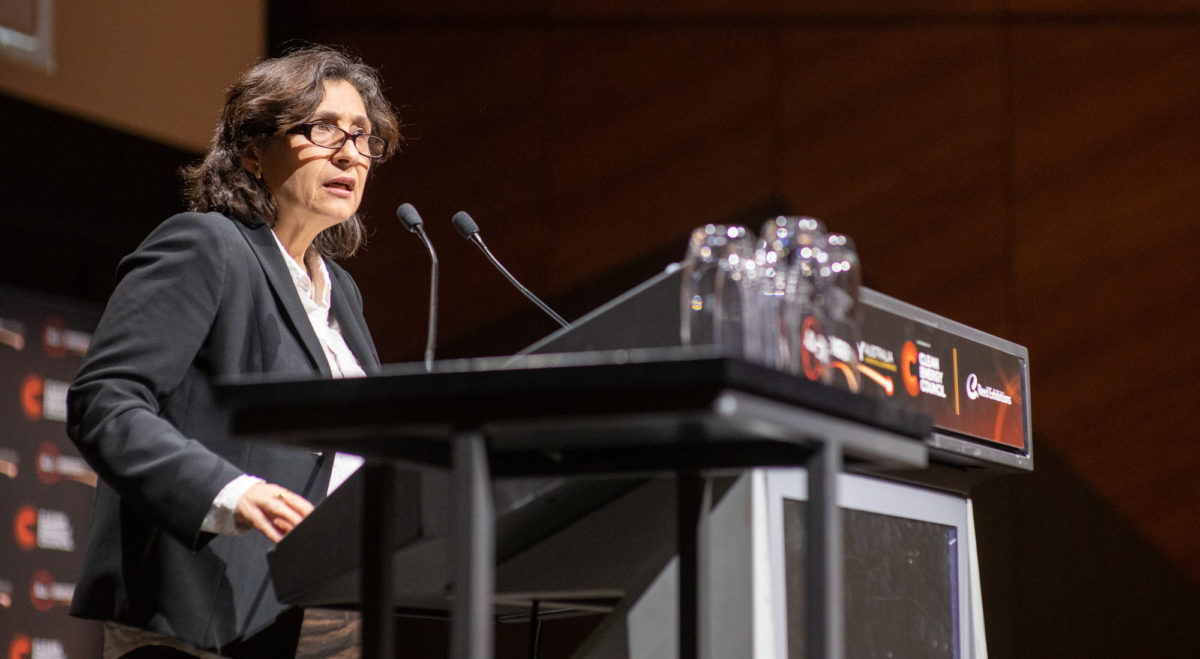Registrations of interest are now open to what looks to be the second round of Victoria’s large scale renewables program. The Victorian state government today called for businesses looking to develop utility scale renewable projects in the state to subscribe to be updated to what appears likely to become VRET-2.
The VRET-2 would look to foster the development of “at least 600 MW” of large scale renewable projects in the state. While details as to the scheme are scarce, language in today’s announcement appears to indicate that the renewable energy from such projects could be contracted with the state government to power its operations.
“The market sounding process will test the capacity of industry to deliver at least a further 600 MW of renewable energy – enough to power every hospital and school in Victoria, Melbourne’s train network and a range of other Government infrastructure and services.”
The Clean Energy Council welcomed the announcement, labeling the move a “clean recovery.
“The timing of today’s news couldn’t be better – Victorians want to know what’s on the horizon following a terrible six months,” said the CEC’s Kane Thornton in a statement. “Local job creation, a more secure energy supply and a means to address climate change are all ahead as Victoria works towards 50 percent renewables over the next decade.”
What about grid constraints?
As with a growing number of parts of Queensland, New South Wales and Victoria, the ability of Australia’s electricity network to cope with the new renewable generating capacity, while ensuring the lights stay on, could present a challenge to prospective V-RET2 projects. Grid connection delays, curtailment, Marginal Loss Factor penalties and FCAS payments have all impacted the bottom line of solar project stakeholders over the past year.
The CEC’s Thornton noted that grid connection challenges will have to be addressed as a part of the VRET-2. “It will be critical to ensure these projects can connect to the grid. We’re pleased to hear that the Victorian Government is supporting the streamlining of the grid connection process and also the development of the renewable energy zone model to ensure these projects can contribute positively to the grid while providing investor confidence,” said Thornton.
The state government has indicated that the call for registrations of interest represents “the next step” in its plans to developer Renewable Energy Zones (REZ) in the state – with expediated grid connection processes. To what extent the state government can influence grid regulators, without strengthening the network itself, remains to be seen. Queensland and NSW are moving forward with REZs.
The CEC said that 900 jobs could be created through the development of VRET-2 projects, alongside an additional 120 jobs in the operational phase – in project O&M. Under the inaugural VRET, according to the state government, some 1,500 jobs were created, particularly in regional parts of the state.
“Renewable energy is supporting thousands of jobs and local businesses across Victoria – and it will help drive our economic recovery from coronavirus,” said Victorian Energy Minister Lily D’Ambrosio. “It’s not only good for our economy, it will deliver more reliable, affordable energy to households across Victoria.”
The CEC has been reporting a significant decline in large scale renewable project development. Environment Victoria released a policy brief in late August with similar findings, calling for the state government to act urgently to support the large scale renewable market segment. It noted that as of June, there were nine large scale solar and 13 wind projects either under construction or soon due to commence – with a total capacity of 3.25 GW.
“Victoria’s old and heavily polluting coal power stations won’t be around for much longer and it’s vital we put Victorians to work now building clean energy to replace them,” said said Environment Victoria CEO Jono La Nauze in a statement. La Nauze added that local content requirements could be built into the V-RET2 tender.
“The Andrews government’s first Victorian Renewable Energy Target auction … resulted in the Geelong Ford Factory being repurposed to make parts for wind turbines,” said La Nauze. “In the absence of a coherent national energy policy, the pipeline of future work is drying up. The state government’s commitment to supporting renewable energy projects is essential to keep Victoria’s wind and solar industries thriving.”
This content is protected by copyright and may not be reused. If you want to cooperate with us and would like to reuse some of our content, please contact: editors@pv-magazine.com.









By submitting this form you agree to pv magazine using your data for the purposes of publishing your comment.
Your personal data will only be disclosed or otherwise transmitted to third parties for the purposes of spam filtering or if this is necessary for technical maintenance of the website. Any other transfer to third parties will not take place unless this is justified on the basis of applicable data protection regulations or if pv magazine is legally obliged to do so.
You may revoke this consent at any time with effect for the future, in which case your personal data will be deleted immediately. Otherwise, your data will be deleted if pv magazine has processed your request or the purpose of data storage is fulfilled.
Further information on data privacy can be found in our Data Protection Policy.